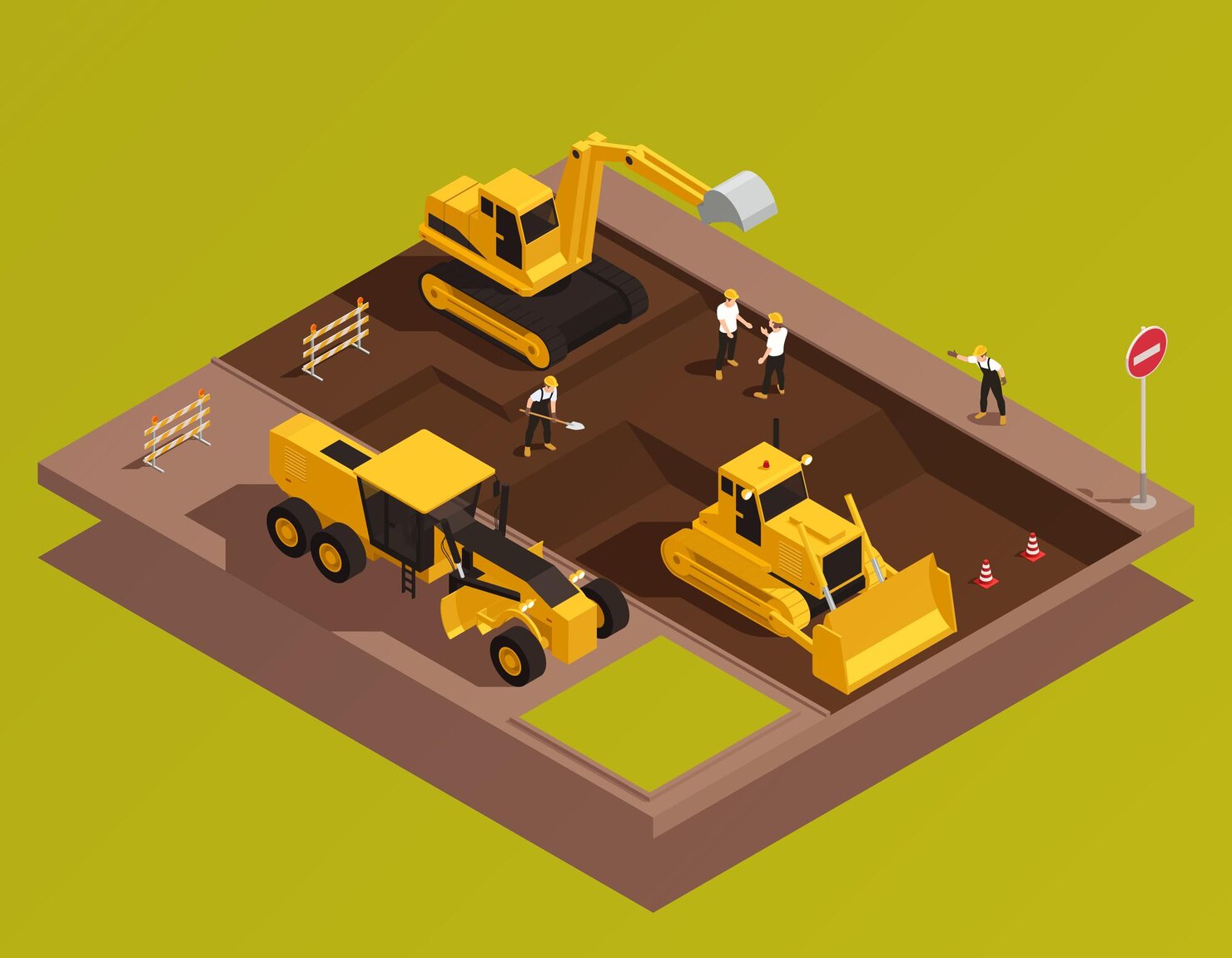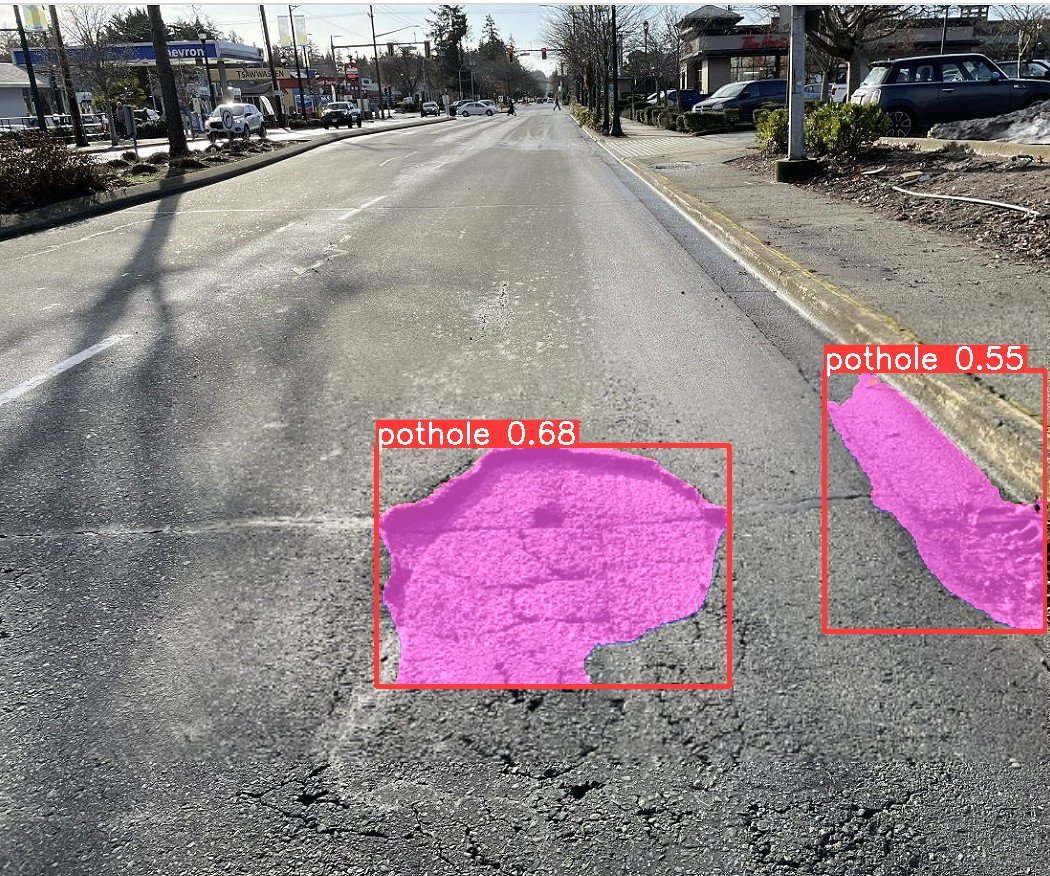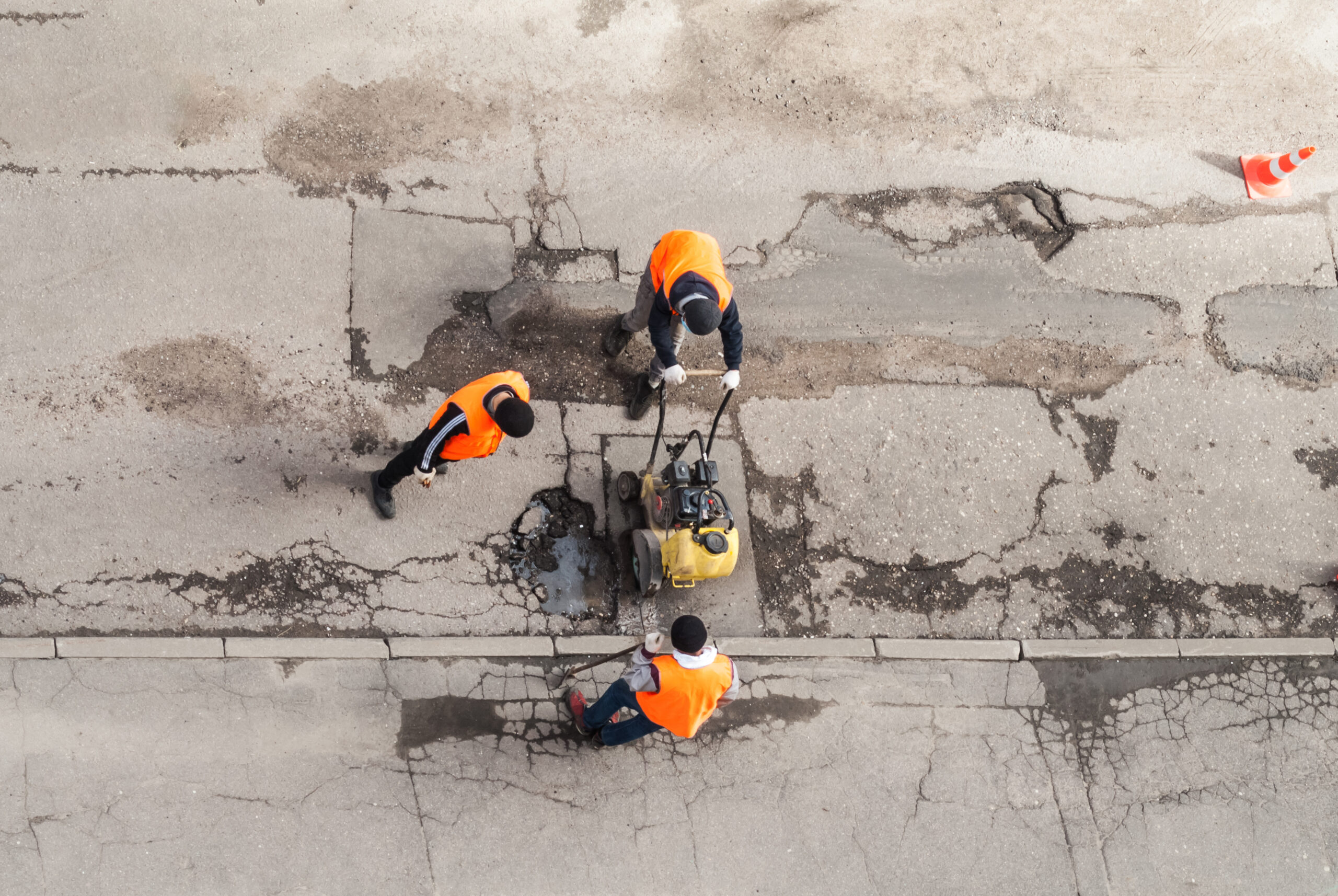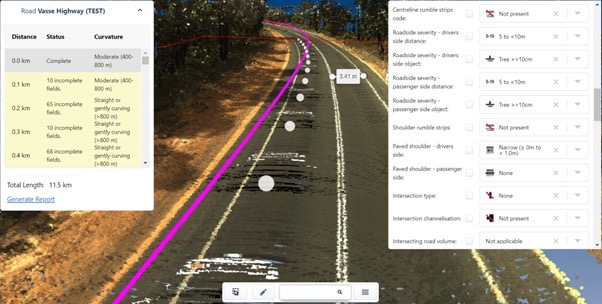AI Used in Road Maintenance: Revolutionizing Infrastructure Management
Smart Road Maintenance: 4 AI Technologies Revolutionizing Pothole Detection, Traffic Analysis & Infrastructure Safety 2025
Road maintenance is a critical component of infrastructure management that plays a key role in ensuring safe and efficient transportation. Roads, bridges, and highways are the backbone of urban and rural connectivity, but they are subject to wear and tear due to heavy traffic, weather conditions, and aging. Effective road maintenance is essential to prevent accidents, reduce vehicle damage, and improve the overall driving experience. However, traditional methods of road inspection and repair are often labor-intensive, costly, and time-consuming. Enter Artificial Intelligence (AI) – a revolutionary technology that is transforming the way roads are maintained and managed, making the entire process more efficient, cost-effective, and proactive.
In this blog post, we will explore how AI is being used in road maintenance, the various applications of AI in detecting road issues, and the benefits it brings to infrastructure management. We will also look into future possibilities that could further revolutionize how road networks are maintained, ultimately creating safer and more sustainable roadways for everyone.
The Challenges of Traditional Road Maintenance

Before diving into AI's role in road maintenance, it's essential to understand the challenges associated with traditional methods of road maintenance:
Manual Inspection: Traditional road maintenance involves manual inspection by engineers and technicians. This process is time-consuming, prone to human error, and may miss critical issues that are not visible to the naked eye. Manual inspections also require trained personnel to physically inspect road surfaces, which is not scalable when managing large road networks across vast geographic areas. The reliance on these methods often results in inconsistent quality and delayed detection of road damage.
Limited Resources: Road authorities often face limited resources and budget constraints, making it difficult to maintain and repair every stretch of road. This leads to prioritizing maintenance work, which can leave some areas in disrepair for extended periods. The scarcity of resources means that authorities must make tough decisions about which roads receive attention first, often delaying essential repairs and leading to further deterioration of infrastructure.
Reactive Maintenance: Most traditional road maintenance approaches are reactive rather than proactive. Repairs are often carried out after significant damage has already occurred, leading to higher repair costs and greater disruption to traffic. This approach not only increases costs but also contributes to increased wear on vehicles and longer travel times for road users. Reactive maintenance also means that damage often goes unnoticed until it becomes a serious safety hazard, putting drivers at risk.
Safety Concerns: Manual road inspections can put workers at risk, especially when inspecting busy highways or roads in hazardous conditions. Ensuring worker safety is a significant challenge, as workers are exposed to traffic, adverse weather conditions, and dangerous roadside environments during inspections and repairs. Additionally, traffic control measures must be implemented during inspections, which can lead to congestion and increased safety risks for both workers and road users.
How AI is Transforming Road Maintenance
AI is revolutionizing road maintenance by automating inspections, predicting maintenance needs, and improving the efficiency of repair operations. Here are some of the key ways AI is being used in road maintenance:
1. AI-Powered Road Condition Monitoring

AI is being used to monitor road conditions in real time. By using advanced sensors, cameras, and machine learning algorithms, AI can identify issues like potholes, cracks, and other defects that need attention. AI-powered monitoring allows authorities to take immediate action, ultimately preventing minor issues from escalating into major problems.
Applications of AI in Road Condition Monitoring:
Image Recognition: AI-powered cameras installed on vehicles or drones can capture high-resolution images of road surfaces. Using image recognition algorithms, AI can detect and classify road defects, such as potholes, surface cracks, and fading lane markings, with high accuracy. This helps authorities prioritize repairs and allocate resources effectively. The ability to classify different types of defects also ensures that the most critical issues are addressed first.
Smart Sensors: Sensors embedded in road infrastructure or in vehicles can collect data about vibrations, surface irregularities, and other indicators of road damage. AI analyzes this data to identify areas that need maintenance, enabling timely repairs. These sensors can also detect early signs of structural issues that may not be visible but could lead to significant damage if left unaddressed. By continuously monitoring road conditions, AI helps prevent costly repairs and extends the lifespan of road infrastructure.
Predictive Maintenance: AI can analyze historical data on road conditions, traffic patterns, and environmental factors to predict when and where road damage is likely to occur. This proactive approach allows authorities to address issues before they become severe, reducing long-term maintenance costs. Predictive maintenance helps optimize maintenance schedules, ensuring roads are repaired before they deteriorate to unsafe levels. By anticipating future maintenance needs, authorities can plan repairs more effectively, reducing disruption to traffic.
Vehicle-Mounted Systems: AI systems mounted on public transportation or utility vehicles can continuously monitor road conditions as they move through the city. This creates a dynamic and up-to-date map of road health, allowing authorities to respond quickly to emerging issues. The use of AI in vehicle-mounted systems also enables real-time data collection, ensuring that road conditions are always monitored without the need for dedicated inspection teams.
2. AI-Driven Drones for Road Inspection
 Drones equipped with AI technology are being used for road inspection and monitoring. They can cover large areas in a short amount of time and provide a bird's-eye view of the road network, identifying issues that may not be visible from the ground. Drones are particularly useful for inspecting hard-to-reach areas, such as bridges and overpasses, where traditional inspections may be challenging or unsafe.
Drones equipped with AI technology are being used for road inspection and monitoring. They can cover large areas in a short amount of time and provide a bird's-eye view of the road network, identifying issues that may not be visible from the ground. Drones are particularly useful for inspecting hard-to-reach areas, such as bridges and overpasses, where traditional inspections may be challenging or unsafe.
Benefits of AI-Driven Drones:
High Precision: AI-driven drones can capture high-resolution images and videos, which are then analyzed by machine learning algorithms to detect road damage with pinpoint accuracy. The use of AI enables the detection of even minor defects that could potentially grow into larger problems if not addressed. High precision allows for early intervention, preventing small issues from becoming costly repairs.
Reduced Inspection Time: Drones can inspect miles of road in a fraction of the time it would take a human inspection team. This significantly speeds up the inspection process and allows for more frequent monitoring. Frequent inspections help in identifying problems early and maintaining road quality more consistently. By reducing the time required for inspections, authorities can allocate more resources to actual repair work.
Enhanced Worker Safety: Using drones for road inspections reduces the need for workers to be physically present on busy highways or dangerous locations, enhancing safety. Drones can access hard-to-reach areas, such as bridges or elevated roads, where manual inspections would be hazardous or impractical. This not only protects workers but also minimizes the need for traffic disruptions during inspections.
Thermal Imaging: AI-driven drones equipped with thermal cameras can detect temperature variations in road surfaces, which may indicate underlying issues, such as water infiltration or structural weaknesses. This provides a deeper level of analysis beyond what is visible to the human eye. Thermal imaging can also help identify areas prone to cracking due to temperature fluctuations, allowing for preventive maintenance.
3. AI for Road Repair and Maintenance Automation

AI is not only helping in identifying road damage but also in automating the repair process. Robotic road repair systems equipped with AI are being developed to autonomously carry out maintenance tasks, such as filling potholes or repairing cracks. These systems are designed to operate efficiently and with minimal human intervention, reducing labor costs and ensuring consistent quality in repairs.
Applications of AI in Road Repair Automation:
Pothole Repair Robots: AI-guided robots are being used to fill potholes automatically. These robots use computer vision to identify the exact location and dimensions of the pothole, after which they fill it with the appropriate material. This automated process ensures that repairs are consistent and reduces the likelihood of human error. Pothole repair robots can also work during off-peak hours, minimizing traffic disruption.
3D Printing for Road Repairs: Some AI-driven systems use 3D printing technology to repair road surfaces. These systems can precisely apply road repair materials, reducing waste and ensuring that the repair is durable and effective. The use of 3D printing also allows for customized repairs, adapting the materials and methods based on the specific damage identified by AI. This approach results in more durable repairs and reduces the need for frequent rework.
Autonomous Maintenance Vehicles: Autonomous vehicles equipped with AI and repair tools can carry out road maintenance tasks, such as repainting lane markings, cleaning debris, or filling small cracks, without human intervention. These vehicles can operate during off-peak hours to minimize traffic disruption and ensure that repairs are completed efficiently. Autonomous maintenance vehicles can also work in tandem, covering larger areas in a shorter amount of time.
AI-Assisted Asphalt Laying: AI-driven systems are also being used to assist in asphalt laying. By analyzing data about road temperature, material composition, and traffic patterns, AI can help determine the optimal time and method for laying new asphalt, ensuring better quality and longer-lasting repairs. This ensures that the new road surface is more resilient to wear and tear, reducing the frequency of future maintenance.
4. AI for Road Asset Management

Road asset management involves keeping track of the condition of various road elements, such as traffic signs, guardrails, and pavement markings. AI is being used to manage these assets more effectively by providing real-time data and predictive analytics. Effective asset management is crucial for maintaining road safety and ensuring that all road elements are in good working order.
AI Applications in Road Asset Management:
Digital Twins: AI is used to create digital twins of road networks, which are virtual representations of physical assets. By analyzing real-time data from sensors and cameras, AI can update the digital twin to reflect the current condition of the road network, allowing for more effective maintenance planning. Digital twins provide a comprehensive view of the entire road network, helping authorities identify areas that require immediate attention and make informed decisions about resource allocation.
Asset Condition Prediction: AI can predict the degradation of road assets based on factors like weather, traffic, and material quality. This allows authorities to plan maintenance schedules more effectively, ensuring that assets are repaired or replaced before they fail. Predictive asset management helps extend the lifespan of road components and reduces the risk of sudden failures. By planning maintenance proactively, authorities can avoid costly emergency repairs and improve road safety.
Automated Inventory Management: AI can keep track of road assets, such as signs and barriers, and alert authorities when they need maintenance or replacement. This ensures that all road elements are in good condition, contributing to overall road safety. Automated inventory management also helps in optimizing resource allocation, ensuring that maintenance teams have the materials they need when they need them. This reduces delays in maintenance work and ensures that road assets are always up to standard.
Integration with GIS Systems: AI can integrate with Geographic Information Systems (GIS) to provide spatial analysis of road assets. This allows for better visualization of asset conditions and helps in identifying trends or patterns that may indicate emerging issues. By integrating AI with GIS, authorities can gain a more holistic understanding of the road network, allowing for more targeted and effective maintenance strategies.
Benefits of Using AI in Road Maintenance
The use of AI in road maintenance offers numerous benefits that help improve the efficiency, safety, and cost-effectiveness of infrastructure management. Here are some of the key benefits:
1. Cost Savings
AI enables proactive maintenance, which helps in addressing road issues before they become severe and costly to repair. By reducing the need for extensive repairs and minimizing labor costs, AI helps save significant amounts of money in the long run. The ability to predict maintenance needs also helps in optimizing budget allocation, ensuring that funds are used effectively to maintain road quality. Cost savings also come from the reduction in emergency repairs, which are often more expensive and disruptive.
2. Improved Efficiency
AI-powered solutions can complete road inspections and repairs much faster than traditional methods. Drones, sensors, and autonomous repair vehicles can cover more ground in less time, allowing authorities to maintain larger road networks more effectively. The use of AI also reduces downtime for repairs, as automated systems can work continuously without fatigue, ensuring that maintenance tasks are completed promptly. Improved efficiency means that roads are kept in better condition, reducing the likelihood of accidents and improving the overall driving experience.
3. Enhanced Safety
Using AI for road inspections and repairs reduces the need for human workers to be physically present on busy roads, minimizing the risk of accidents. AI-driven systems can also identify hazards, such as road debris or surface damage, before they pose a danger to drivers. By ensuring that inspections and repairs are carried out without putting workers at risk, AI helps create a safer working environment. Enhanced safety also extends to road users, as timely maintenance reduces the likelihood of accidents caused by road defects.
4. Data-Driven Decision Making
AI provides road authorities with real-time data and insights that help in making informed decisions about maintenance priorities and resource allocation. Predictive analytics also allows for better planning and budgeting, ensuring that resources are used efficiently. Data-driven decision making helps authorities focus on the most critical areas, ensuring that maintenance efforts have the greatest impact on road safety and quality.
5. Longer Lifespan of Road Infrastructure
By identifying issues early and addressing them promptly, AI helps extend the lifespan of road infrastructure. Proactive maintenance reduces the rate of deterioration, ensuring that roads remain in good condition for longer periods. This not only saves money but also reduces the frequency of major repair projects, minimizing disruption to road users. Longer-lasting infrastructure also means that cities can allocate more resources to expanding and improving road networks rather than constantly repairing existing ones.
The Future of AI in Road Maintenance
The use of AI in road maintenance is still in its early stages, but the potential for future advancements is immense. Here are some exciting developments that could shape the future of AI-driven road maintenance:
1. Fully Autonomous Road Maintenance Fleets
In the future, we could see the deployment of fully autonomous road maintenance fleets that can operate around the clock. These fleets would consist of drones, robots, and autonomous vehicles, all equipped with AI, working together to inspect, repair, and maintain road networks without human intervention. Such fleets could operate during off-peak hours to minimize traffic disruptions, ensuring that roads are always in optimal condition.
2. Integration with Smart Cities
AI-driven road maintenance solutions will become an integral part of smart city infrastructure. By integrating road maintenance systems with other smart city technologies, such as traffic management and public transportation, cities can create a more efficient and sustainable urban environment. AI will enable cities to monitor and maintain infrastructure in real-time, improving the quality of life for residents and ensuring that transportation networks are safe and reliable.
3. AI and IoT for Predictive Road Maintenance
The combination of AI and the Internet of Things (IoT) will enable even more effective predictive maintenance. IoT sensors embedded in roads and vehicles will continuously collect data, which AI will analyze to predict maintenance needs with greater accuracy. This will help prevent road damage and ensure that repairs are carried out before issues escalate. The integration of AI and IoT will also enable real-time communication between road assets, vehicles, and maintenance systems, creating a connected ecosystem that enhances road safety and efficiency.
4. Advanced AI Algorithms for Better Accuracy
Future advancements in AI algorithms will enable even more accurate detection and classification of road defects. Deep learning models will be able to analyze complex data sets and recognize patterns that indicate early signs of damage, allowing for more precise maintenance planning. Advanced algorithms will also be able to adapt to different environments and road types, ensuring that AI-driven maintenance solutions are effective in a wide range of conditions.
Conclusion
AI is revolutionizing the field of road maintenance, making it more efficient, cost-effective, and safe. By automating inspections, predicting maintenance needs, and even carrying out repairs, AI is helping to ensure that road infrastructure remains in good condition, contributing to safer and more reliable transportation for everyone. The use of AI in road maintenance not only saves time and money but also enhances worker safety and extends the lifespan of road networks.
As AI technology continues to evolve, we can expect even more innovative solutions that will further transform how roads are maintained. By embracing AI-driven road maintenance, cities and governments can create a more resilient and sustainable infrastructure, paving the way for a safer and more connected future.

